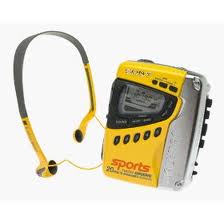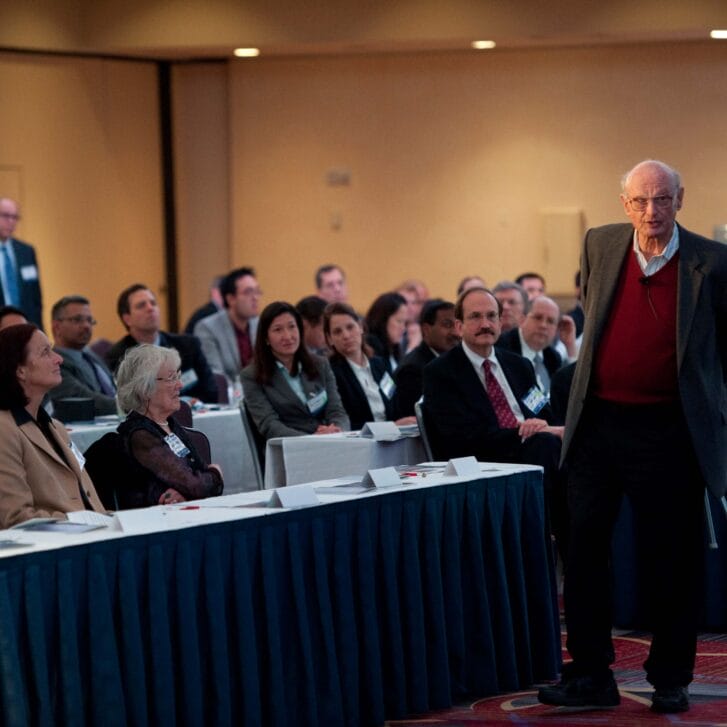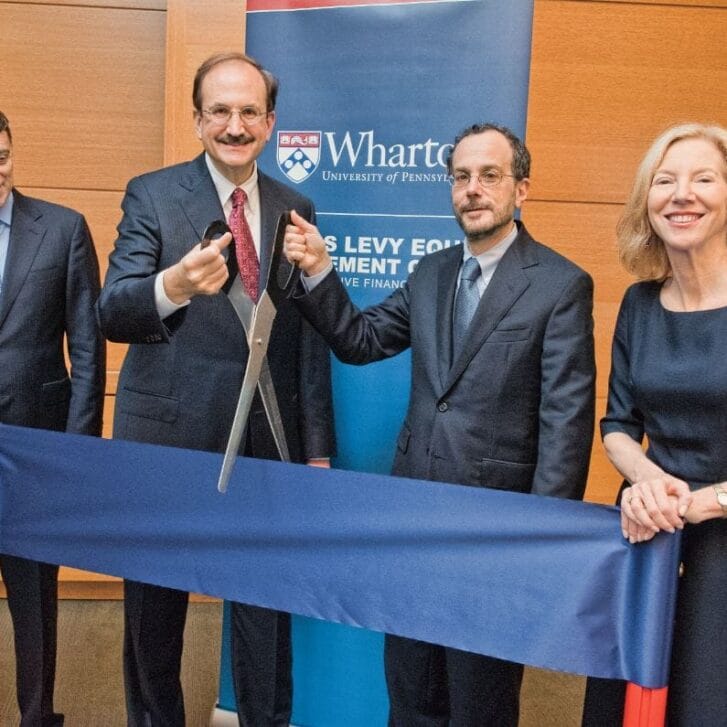Karl Ulrich is taking apart a Rowenta coffee maker. Once he is finished, he will move on to a Sony Walkman. Then a Polaroid instant camera.
He has done the same with automobile dashboard assemblies — or at least watched others take them apart — and most recently, mountain bikes.
Like the engineer that he is, Ulrich, associate professor of operations and information management, enjoys looking at how products are designed. But it’s more than just admiration of the intricate bits and pieces that give a product its unique — or, alternatively, its mass-produced — functionality and aesthetics. Ulrich is convinced that the process of designing products — from the nitty gritty details to larger, system-level decisions — affects how companies ultimately fare in the marketplace. Successful companies, he would say, are those that view the process as a collaborative effort between design, manufacturing and marketing. “The artifact is really the embodiment of a set of hard disciplinary decisions that trade off technical feasibility, consumer preferences, an analysis of the competition and cost,” he notes. “It’s a complex problem, and unless you get people working together on it, you don’t find solutions that are superior.”
Ulrich himself is an example of the collaborative process. Although product design typically has its home in an organization’s R&D department, no such department exists at Wharton. The situation has inspired Ulrich to go out and make his own connections, or “links”, to colleagues in operations and manufacturing, marketing and management. As a result, much of his research is interdisciplinary, including a current study of product variety and brand equity in the mountain bike industry.
Ulrich earned a doctorate in mechanical engineering from MIT, where he taught for five years before coming full-time to Wharton in 1995. One of the courses he offers here is “Product Design and Development,” in which he asks students to present ideas for new products and then work in teams to develop them. “It’s an integrative course that brings together marketing, design and manufacturing issues,” notes Ulrich. This year, among the products students came up with were: a portable water filter that screws onto plastic bottles filled with tap water; an indicator that attaches to dairy packaging and measures the freshness of milk; and a kayak seat that can be retrofitted for sea kayaking.
Ulrich has also consulted with established companies such as Hewlett-Packard and Polaroid, as well as start-ups, including Projectavision, a manufacturer of projection televisions that shipped its first product in April.
Ulrich created the term “product archeology” to describe his method of measuring manufacturing content — the attributes of the design that drive cost — through analysis of the physical products themselves. He then estimates how variation in manufacturing content relates to variation in cost.
“It’s an extremely objective approach,” he notes. “Most of the research in this area has relied on subjective expert evaluation. For example, a survey might ask managers in the auto industry to rate Toyota’s performance with respect to manufacturing cost. The problem with this approach is that a manager’s judgment is clouded by all kinds of other factors, such as Toyota’s reputation for quality. When you do the product archeology, however, you can physically observe the product in a highly reliable way.”
Variations in manufacturing content, Ulrich says, are a clear indication of the importance of design in the life cycle of a product. And in many ways they reflect variations in the way an organization operates. “In the worst organizations, there is neither coordination nor teamwork,” says Ulrich. “What you see is that marketing writes a memo saying they have done some market research — which usually means they have talked to their sales force — and here’s what the product has to do. They give that to R&D. The engineers, none of whom has gone out and looked at competitive products or talked to real consumers, try to interpret what marketing has done. Then R&D tells manufacturing to build the product. Manufacturing focuses on cost reduction, which means they outsource the product to China or some other low-wage economic environment.
“And what you end up with is a product that doesn’t meet customer needs, isn’t attractive and isn’t necessarily low-cost. It fails on all dimensions.”
Coffee Makers: The Good, the Bad and the Ugly
Back to those nitty gritty design details. Ulrich recently completed a study using his concept of product archeology in which he compared the design of 18 automatic drip coffee makers. His goal was to assess the importance of design in determining product costs, and by implication, profitability. Along the way, what he found was significant variation in manufacturing content, not to mention aesthetics.
“Many of the early Mr. Coffees are ugly, while the Rowenta product on the market today is attractive,” says Ulrich, citing two of the brands that he studied. “Yet when you compare the different design details you find that the Rowenta is the product with the least manufacturing content in the data set.
“What’s striking is that among all of the 18 brands I analyzed I couldn’t find any correlation between my estimate of manufacturing cost and the sale price. The Rowenta sells for $49 and has an estimated manufacturing cost of $6. Some of the others sell for about $20 but have estimated costs of more than $9.
 “The variation in manufacturing content suggests that the design capabilities of the organization have a significant impact on manufacturing costs. The product with the least manufacturing content has an estimated cost of $6, while the product with the most content has an estimated cost of more than $10. So it’s almost a factor of two, for a product whose basic function is the same — making coffee.”
“The variation in manufacturing content suggests that the design capabilities of the organization have a significant impact on manufacturing costs. The product with the least manufacturing content has an estimated cost of $6, while the product with the most content has an estimated cost of more than $10. So it’s almost a factor of two, for a product whose basic function is the same — making coffee.”
The second interesting observation Ulrich notes is the absence of trade-offs. “The Rowenta is a more attractive and higher quality product and is also the lowest in terms of manufacturing cost,” he says.
The variation in design and cost arises from several factors. One has to do with very basic design decisions, such as the type of plastic used in different parts. “The tank in the Braun coffee maker, for example, is made from a very low-cost plastic called polypropylene. While it’s cheap, the plastic also tends to show what are called sink marks, best described as little lines where different parts intersect. To hide those unattractive sink marks, Braun’s designers chose a ribbed pattern for the plastic — a solution that lets the company offer a feature that consumers think is classy but that uses a polymer which is half as expensive as other alternatives. The decision has a huge profit impact. More importantly, it’s related to the basic design capabilities of the organization. It’s an example of the kind of details that are involved in getting things right.”
The coffee maker study assumes a given basic product technology, Ulrich adds. “You can imagine what the impact would be if you were also considering variations in the basic technology.”
Based on his data, Ulrich suggests three general hypotheses about product design which he feels are applicable whether one is talking about coffee makers, consumer electronics, heavy equipment or most other products:
First, differences in design practices correspond to significant differences in manufacturing content, and therefore manufacturing costs. In other words, design matters.
Second, for a given set of product requirements, low-cost designs can be achieved to a great extent without compromising product quality. In other words, design is free.
Third, different firms exhibit competitively significant differences in design capability. In other words, design is hard. “Design is like most other human pursuits in that a collection of teams will exhibit different performance capabilities,” says Ulrich.
Corporate culture obviously plays a large role in the design process. Braun, for example, “has a very rich design tradition, with almost no turnover and strong corporate leadership,” says Ulrich. “At the other end of the spectrum are the appliance divisions of companies like Sunbeam and Proctor Silex that suffered from high turnover and low morale during a series of acquisitions.”
Ulrich started out his research focusing on the auto industry. “I gave it up when I realized I couldn’t buy all the products on the market nor could I take them all apart.” But he did get to visit the GM vehicle assessment center outside of Detroit, where he could observe disassembling on a major scale.
“There were huge differences in manufacturing costs for different systems,” he says. “Some instrument panels and dashboard assemblies used two to three times the parts of others. The VW Passat, for example, had an amazingly low cost instrument panel, while the Mazda 626 used twice as many parts leading to significantly more manufacturing content.
“In the bumper system, the Taurus had about half the parts of the Thunderbird. So you have two very similar sedans in terms of size and functionality, developed by the same organization. One team got it right and the other didn’t.”
Theoretically, one might expect a trade-off between quality and cost in the manufacturing arena, says Ulrich. But when you look at the data, “the higher quality organizations often also have lower costs. This idea that companies are operating on what economists call ‘the efficient frontier’ — i.e., they are all making equally efficient decisions trading off different dimensions of performance, such as high-quality, high-cost versus low-quality, low-cost — turns out to be false. Many firms are way off the efficient frontier. They are bad at everything. The firms that are good are often good at everything.
“At the same time, the system is very dynamic. Firms are not necessarily consistently good. But a firm like Toyota has been good for a long time. It continues to get better and it dramatically outperforms the competition. I don’t think this situation is unique to design. The basic insight is that there are differences in capabilities and they are real. How you explain them and how you manage them is a whole other topic.”
200 Varieties of Walkmen
The second half of the design story addresses what Ulrich calls “product architecture” — the scheme by which the functions of a product are allocated to its components.
 Take — or take apart — the Sony Walkman, as Ulrich has. Functions include the radio tuner, user interface, enclosure, tape transport, power supply and signal processing.
Take — or take apart — the Sony Walkman, as Ulrich has. Functions include the radio tuner, user interface, enclosure, tape transport, power supply and signal processing.
A manufacturer, says Ulrich, has to decide how to assign these functions to the different physical components of the product.
In Sony’s case, the company designed the product around three basic systems or sets of components: The tape transport mechanism, the electronics/circuit board and the enclosure/user interface. “The company made an architectural decision to think about the product in terms of three basic physical chunks. That decision allows them to do some interesting things, such as produce more than 200 different models of the Walkman,” says Ulrich.
They do that by relying on only three tape transport mechanisms — a small and expensive one, a rugged one for sports and a cheap one. “The tape transport function is thereby allocated to a single component in a modular fashion so it can be interchanged in many different products.”
A different firm might choose to adopt a different architectural strategy — for example, one that integrates the enclosure and tape transport so that every time the enclosure is changed, the tape transport has to be changed as well.
“But then you couldn’t offer 200 different varieties without going out of business,” Ulrich says. “That company might choose to follow a low-cost low-variety strategy. Sony, on the other hand, has chosen to follow a high-variety strategy which is enabled by these architectural choices. This strategy is also enabled by Sony’s production system choices. The company has invested in a very flexible assembly technology, including their own robotic assembly system. It’s a good example of the joint decision making that has to come together in order to produce a product strategy.”
Architectural decisions on how to allocate the functions of the product have a huge impact on product variety, on the ability to upgrade and change these products and on the efficiency of product development, says Ulrich.
A company that handled the product architecture question differently is Polaroid. In the 1970s, the company devised a design strategy in which it created a complex injection molded structure for its flagship product, the Spectra camera. “The main structural parts are amazing; they physically integrate dozens of features and functions of the camera,” notes Ulrich.
“The molds cost hundreds of thousands of dollars to make, but once Polaroid got the design and tooling right, the camera could be produced at very low cost. Using this integrated architecture, the company prospered on a low-variety, low-cost strategy for 20 years.”
But in the 1980s and 1990s, customer requirements in instant photography began to change and Polaroid entered several new electronic imaging markets, Ulrich says. “The company faced competitors who were very good at developing a wide variety of new products quickly — a strategy enabled by modular architectures. In response, Polaroid has been forced to change its development processes and product architectures so that its products are more modular, consisting of standardized components and systems which can be shared across existing products and carried over to new ones.”
In some industries, variety is important and in others it’s not, says Ulrich. He has been working with a division of Hewlett-Packard to evaluate whether the computer manufacturer is at the point where it needs to go high variety. “In other words, is the company’s product starting to be perceived as a commodity with respect to its basic functionality? Does it now have to start adding differentiation on other dimensions to continue to grow? I don’t have a good answer for when that point is, but it does seem to happen once the technology matures.”
As an example, look at the Walkman, says Ulrich. “In 1980, consumers were thrilled to get high fidelity sound out of something about the size of a paperback book. Steadily there were improvements in size, cost and battery life. The basic technology of the product kept getting better. Pretty soon, everyone could buy a personal stereo for $50 from about four different competitors. At that point, the “sports” category emerged. The need for ruggedness in the product was suddenly important, which in turn led to increased product variety.
“Looking at that situation, another company could say that their product too is at the point where there are diminishing returns in terms of making improvements to the basic technology. Consumers are starting to look to secondary properties of the product. It might in fact be time to start developing products that are more focused on subsegments of the market. Variety is about to emerge as important.”
Exactly when that happens, however, is hard to predict, says Ulrich. It’s an area of research he plans to pursue further.
Biker Heaven
When Ulrich was looking for a “domain” in which to study variety decisions — in particular the benefits and costs associated with a particular variety strategy — he and three colleagues from Wharton — Marshall Fisher, Stephen J. Heyman Professor of Operations and Information Management; David Reibstein, William Stewart Woodside Professor of Marketing; and PhD candidate Taylor Randall, settled on the mountain bike industry.
They chose mountain bikes because of the availability of data on different companies, the numerous competitors and bike models within the industry and their own sheer enjoyment of the sport.
“In our study we examine the types of products, production systems and supply chains that companies are using to provide product variety to consumers,” says Ulrich. “We investigate the impact that choices in each of three areas have on different aspects of firm performance.”
The researchers focused on the “over $200” category of mountain bikes, primarily on 1995 bike models offered for sale in the U.S. Among other things, they noticed that manufacturers pursue very different strategies with respect to the breadth of models offered. For example, Giant offers bikes from $270 to $3,700 while Ritchey offers bikes from $1,675 to $3,000 and Raleigh from $200 to $1,100. Conejo’s brands start at $2,000 and go up to $6,000 while Cannondale’s start at about $500 and go up to about $4,000.
“We got interested in what motivates these different strategic choices about where your product line is. If you look at a brand like Marin, you see they have 85 models. Cannondale has about 15. They are in the same breadth of the market but with very different variety strategies.
“As researchers, we are looking at decisions made by a company’s top strategists that relate to product variety. Specifically we want to know what guides those decisions. On what dimensions is a company going to offer high variety: Color choice? Materials? Frame Type?”
Another key decision area Ulrich and his colleagues are looking at is how the company operates its production system: in a make-to-forecast mode or a make-to-order mode. Also, what level of flexibility exists in the production process in terms of the ease with which production can switch between different types of products such as mountain bikes to road bikes or aluminum bikes to steel bikes.
Ulrich gives an example by looking at four competitors — Specialized, Cannondale, National and Voodoo. In the mountain bike category, Specialized has 173 stock-keeping units (SKUs, or unique variants of the product), Cannondale has 110, and Voodoo and National are both make-to-order producers, which means their SKUs number in the tens of thousands.
“On the face of it, you would say Voodoo and National are the high-variety producers. But when you look below the surface, what you discover is that the dimensions on which they compete are quite different. Cannondale has 12 unique frame configurations, while Specialized has six different frames, four of which are basically the same with slight differences in angles while the other two have different rear suspension designs. Voodoo has only two frame geometries and National has three. Then you look at materials and Specialized offers three different materials, Cannondale has one, Voodoo offers three and National offers two. Colors are interesting. Most manufacturers offer one or two per model. National offers 104.
“So what dimensions of variety are they competing on? Specialized is competing on frame material. Cannondale is competing on frame configuration. Voodoo is competing on frame material and also on the different component choices they have, and National is competing on color. The decision of which dimensions of variety to offer is one of the key elements of a firm’s variety strategy.”
There are other decisions as well. Make-to-order vs. make-to-forecast. Make-to-order is the obvious choice if a company is going to offer 104 colors. There is also process flexibility, which takes into account the way frames are put together. The conventional approach involves a fixture consisting of a large steel plate with clamps that hold a frame in a precise configuration. One fixture for every different shape of frame is needed. The alternative is Cannondale’s approach, a “slot and tab” assembly in which a computer-controlled laser cuts little tabs and little slots in the frame tubes. The frame can then be put together and essentially fixtures itself for welding.
“It’s all consistent,” says Ulrich. “And it’s a joint decision between design, manufacturing and marketing. Marketing decides the company is going to compete on frame configuration. The design decision is to use this slot and tab approach. The production decision is to use a computer controlled laser. It wouldn’t work to do any one of these things alone”.

























